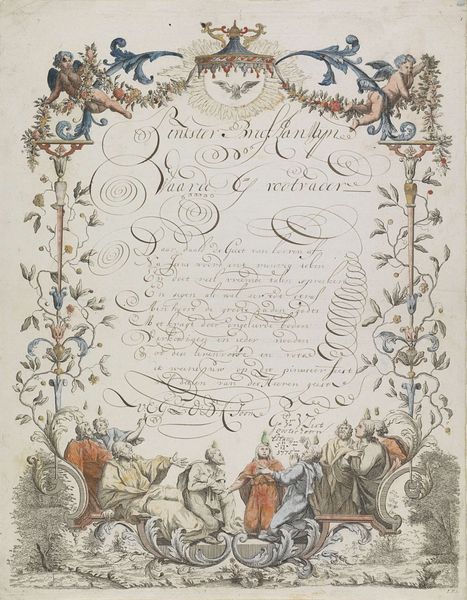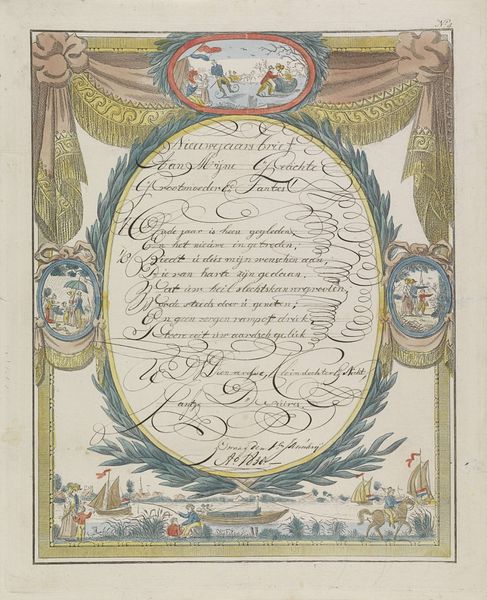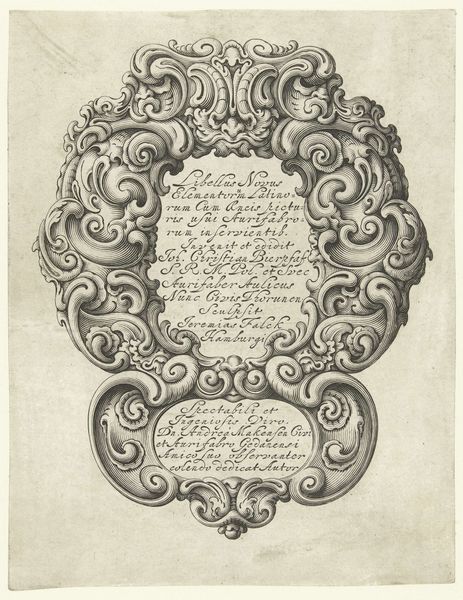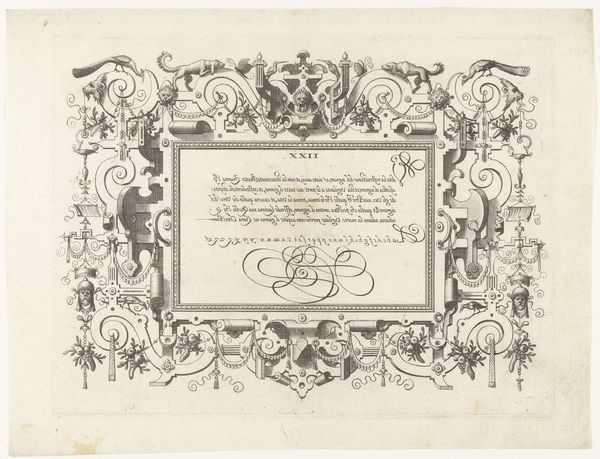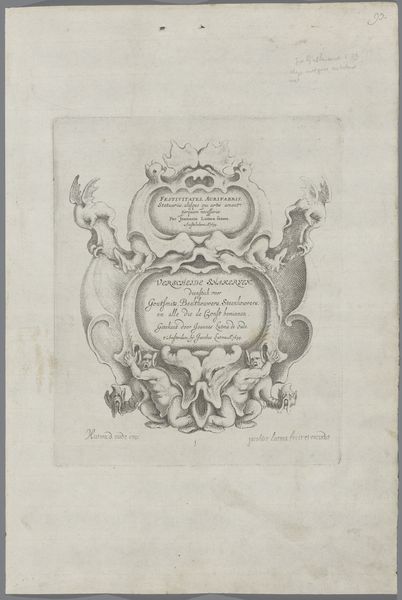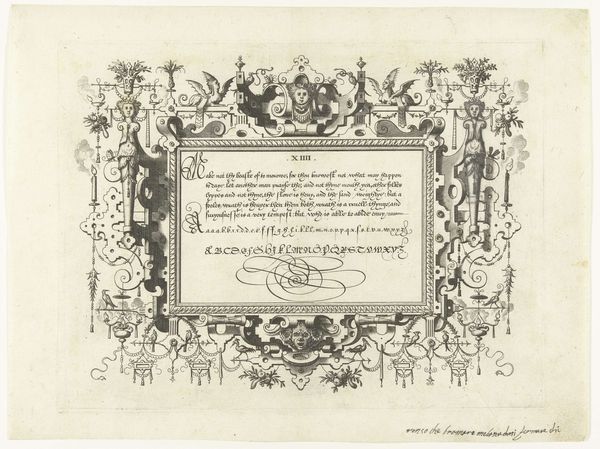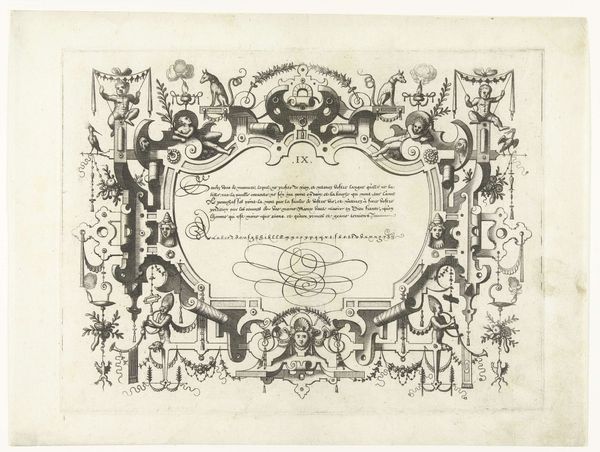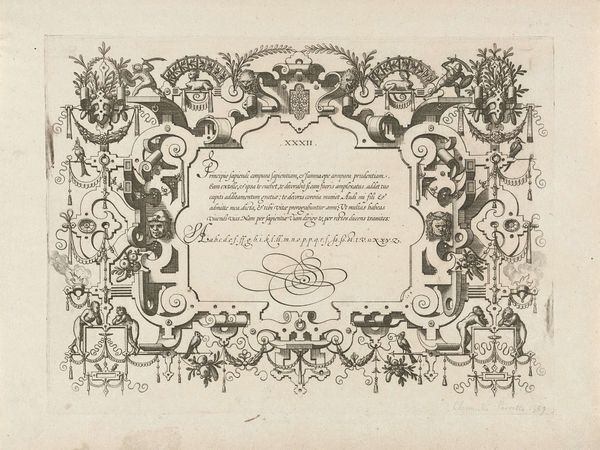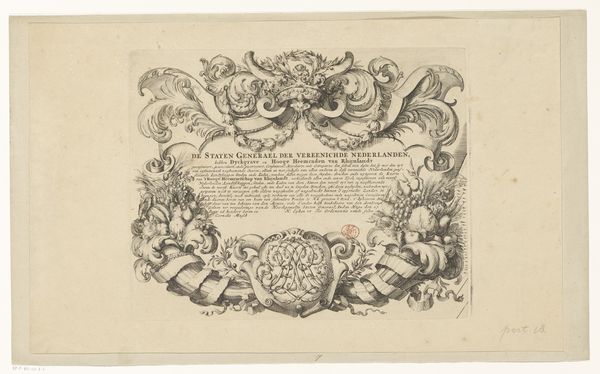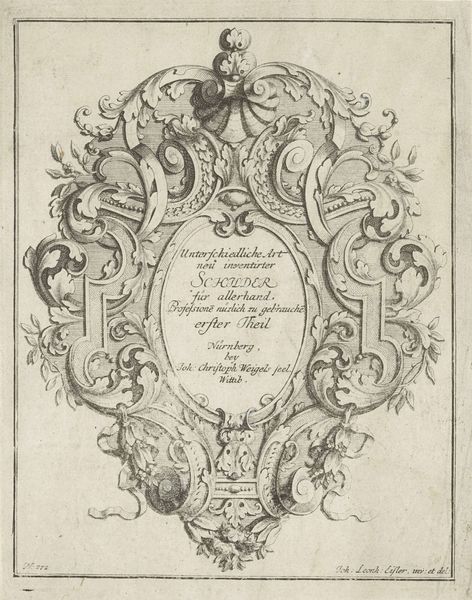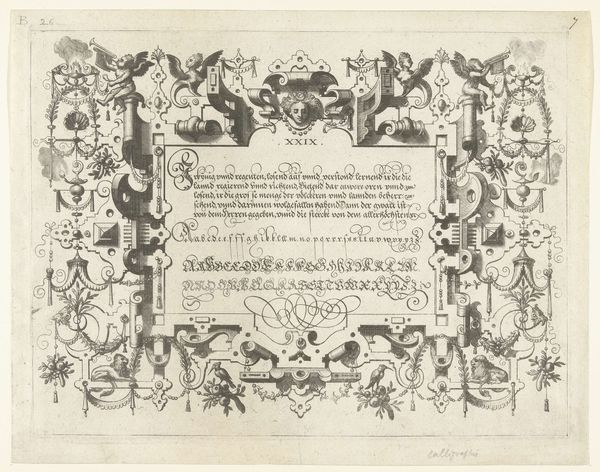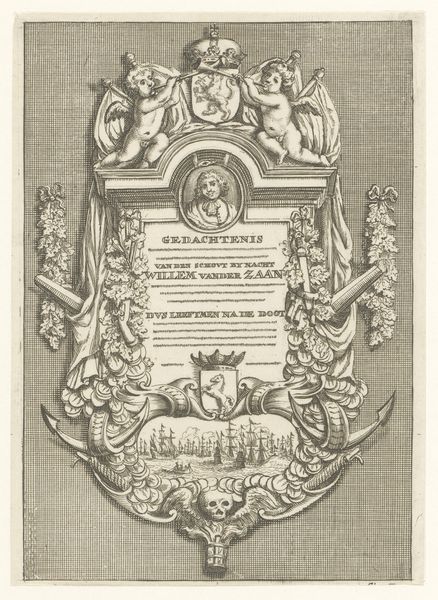
Wensbrief met voorstellingen uit het Nieuwe Testament 1761 - 1804
0:00
0:00
ervendeweduwejacobusvanegmont
Rijksmuseum
drawing, print, ink, pen, engraving
#
drawing
#
toned paper
#
narrative-art
#
pen drawing
# print
#
ink
#
folk-art
#
pen
#
engraving
Dimensions: height 415 mm, width 330 mm
Copyright: Rijks Museum: Open Domain
Curator: So, this intriguing piece is titled "Wensbrief met voorstellingen uit het Nieuwe Testament," or "Greeting Letter with Scenes from the New Testament." It's a drawing made with pen and ink, even an engraving, from somewhere between 1761 and 1804. It's part of the Rijksmuseum collection. Editor: Wow, okay. Immediately, it strikes me as both intimate and strangely… official. Like a royal decree rendered by a particularly skilled, maybe slightly tipsy, calligrapher. Is that a fair first impression? The light washes feel watercolour, the density of symbols feels intense and baroque. Curator: Absolutely fair! It's a folk art form, a visual letter. And yes, Baroque is a fitting association. Look how the swirling calligraphy becomes part of the imagery itself. It frames these little narrative vignettes – each telling a story from the New Testament. It would seem everyone wants to be an artist and have a message. Editor: The frames create such a sense of contained drama. I'm drawn to the scene with the angel. What's happening there? The gestures are so… dramatic. What exactly does it means to draw like this. What I find amazing is how we move things along without speaking. Curator: That's Jacob wrestling the angel. A powerful scene! Jacob’s wrestling symbolizes a struggle for divine blessing. Its about the symbols but it is a metaphor too about something very human - never to give up. He is on a donkey on his knees with his family and being offered the key to his homeland. This engraving has many scenes. What about other scenes what symbols do you see and the value behind these symbols? Editor: You're right! I find the scene of that sacrifice fascinating. All that tension compressed into a tiny space…it evokes so many cultural and moral connotations – power, obligation, redemption…The entire composition then becomes a web of interrelated ideas and images – this really highlights how image, like language, becomes this system for negotiating life itself. But the frame almost seems to constrain the humanism inside. What do you see? Curator: I see that too, the need of making statements on something that's written in you inner compass and wants to be communicated or maybe even heard. But I see it mostly as a reflection of an age when belief and symbolism were intertwined, influencing how people communicated even simple good wishes. Editor: It's left me pondering on this interesting time that it was created. How intertwined text and image are, forming and deforming what you can be true, this opens me again to how symbols shift and endure.
Comments
No comments
Be the first to comment and join the conversation on the ultimate creative platform.
